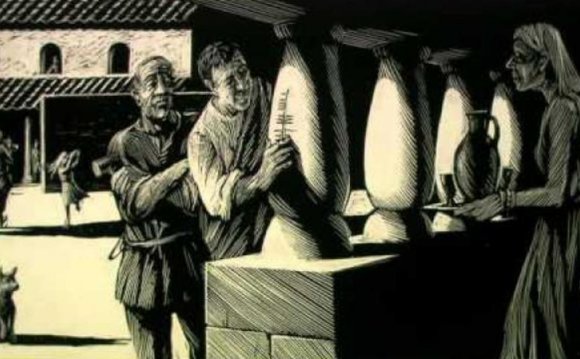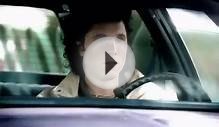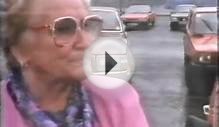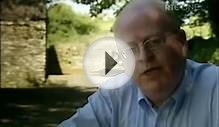
Under an unmarked grave at Holy Cross Cemetery in Butte are the remains of Thomas Manning, an Irish immigrant who gained fame only by taking a bullet in the Anaconda Road Massacre in 1920 and dying from it.
Sixteen other miners were shot while picketing in Butte that day, but it is through Manning’s death that writer and award-winning radio documentary maker Joe Kearney of Ireland will tell a larger story.
The violence came at a time of great confusion and conflict, especially for the Irish on this side of the Atlantic and those in Butte in particular.
“We have got the Butte Irish, who have allegiance in their minds back to Ireland, which is in a war for its independence that’s active at this stage, ” Kearney said during an interview in Butte this week.
“The First World War is over, America has sided with Britain, Britain in their minds is the enemy of the Irish, particularly the Hibernians, ” he said. “There is confusion that crops up with anti-imperialism and it starts to mix with anti-capitalism and it’s that area of conflict that I want to tell using Thomas Manning as the point in which we can tell the story.”
It will be told through sounds – historians talking, the stamps of footsteps, gunshots ringing out, cemetery gates squealing shut – and Kearney speaking. He expects to gather 30 hours of audio that must be condensed to a 45-minute documentary to be aired by RTE – the national public service broadcaster in Ireland – and perhaps other outlets.
Kearney has worked with the Documentary on One program the past few years and his pieces have won awards in Europe and the U.S. One of them – “No Cure for Mickey Finn” – is about a childhood friend who became a great musician and legendary local figure but drank himself to death at 35.
It was about more than Mickey Finn, for his short life was emblematic to a time when some in Ireland drank with no thought about the consequences to come later.
“He really could have been up there with the greatest of traditional Irish fiddlers but unfortunately, you couldn’t afford to have him in your company because he was just so much trouble because alcohol had turned on him, ” Kearney said.
INTEREST PIQUED
His interest in Butte stems from a few sources, including “The Butte Irish, ” a book by Montana historian David Emmons, and a 2013 photo in The Montana Standard of Butte native Julie Crowley, whose childhood home was on Anaconda Road.
The photo showed Crowley, who has researched the Anaconda Road Massacre, holding a photo of the once congested street from decades ago.
On April 19, 1920, two unions called for a strike of mines around Butte, and two days later, company guards fired shots into a crowd of picketers near the Neversweat Mine of the Anaconda Copper Mining Co. They were all shot in the back as they tried to flee.
The source of the first shot was never determined, but Manning died of his wounds four days later. The inquest pitted miners against the Anaconda company, but a jury couldn’t say who fired the shot that killed Manning.
Few in Ireland know of the conflicts in play during that deadly day in Butte, Kearney said, but “there are reasons we should know it.”
“The links between Ireland and Butte are huge and they have been covered in documentaries and in television documentaries … but I wanted to find some novel way of looking at the story, ” Kearney said.
He planned to be here all week doing interviews, gathering sound and searching through old documents at the Butte-Silver Bow Archives. Crowley found Manning’s unmarked grave, he said, and she will be among those interviewed.
He might begin and end the story with the squeaks of cemetery gates.
“I believe the best possible pictures are in the mind, ” Kearney said. “What I like to do in making documentaries is build up that kaleidoscope of sound that carries underneath the storyline itself and really grabs the listener and holds their attention, ” he said. “We have to hold their attention for 45 minutes.”
TAKING IN THE FESTIVAL
Kearney timed his trip so he could take in the An Ri Ra Irish festival in Butte this weekend. His wife, Anne, came to Butte with him and two friends from Ireland will join him for the festival. They plan to take in Yellowstone National Park next week before heading back.
Kearney passed through Butte about 20 years ago during one of a few trips he’s made to Montana.
“I absolutely love it, ” he said. “To me there are a number of Montanas. You have the straight grain belt with the big skies and you have the wonderful Rockies element. The towns themselves are very individual. Butte seems to have an incredible degree of individuality that you don’t see in other Montana cities.”
The documentary should be broadcast in October, he said, but he wants to premier it first at the Allihies Copper Mine Museum in County Cork, Ireland, where people worked copper mines in the 1800s.
Many of them honed skills they later brought to Butte and some are buried at Holy Cross.
“I looked down and would see someone who was previously from Allihies, which is marked on the gravestone, ” he said. “That is just fantastic. It blew me away.
“Finding Thomas Manning’s grave unmarked is highly symbolic because many of the mine workers in Allihies itself in pre-famine times are also in unmarked graves, ” he said. “I keep coming up on all these parallels. It just indicates how close those two communities were.”
RELATED VIDEO











